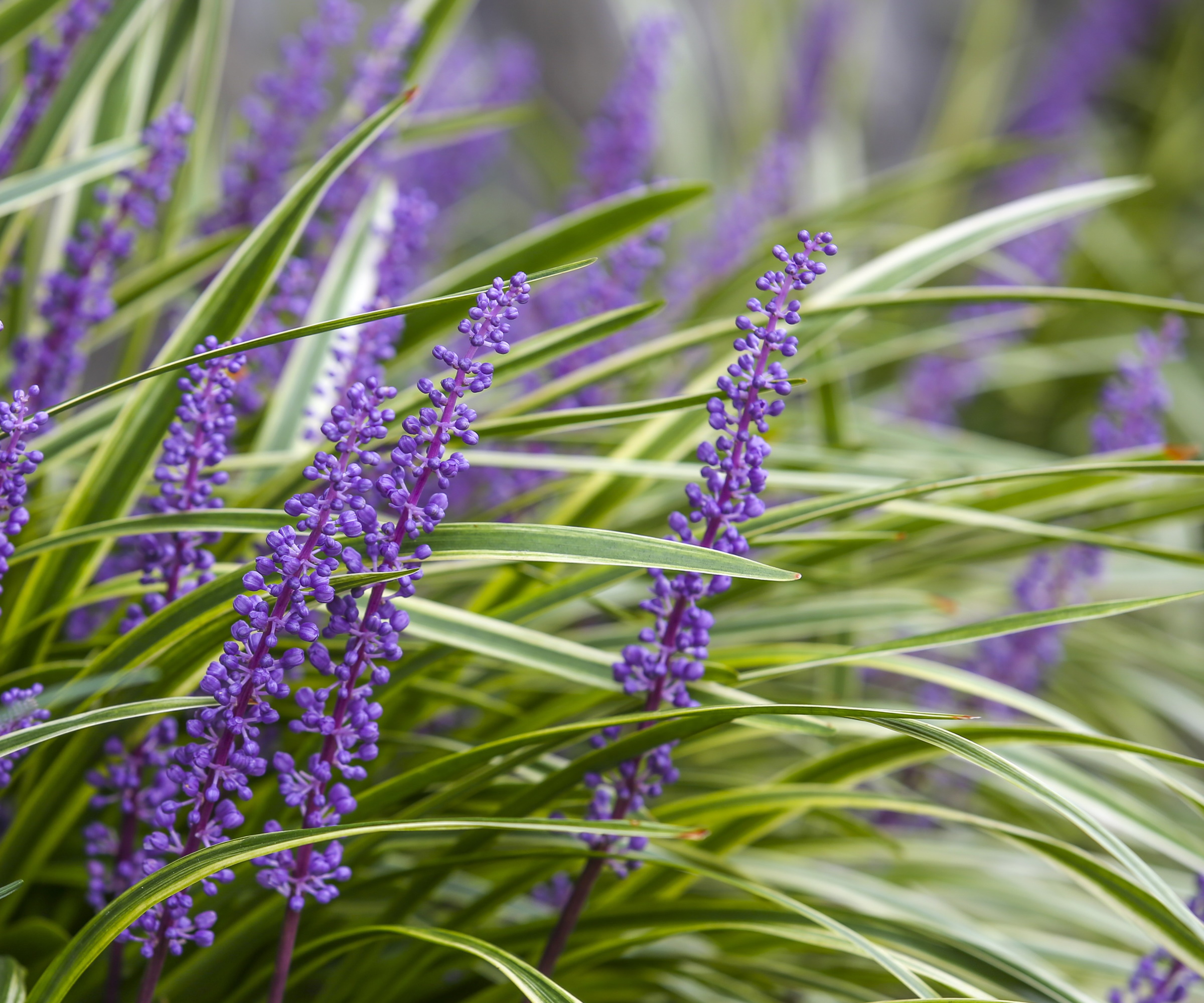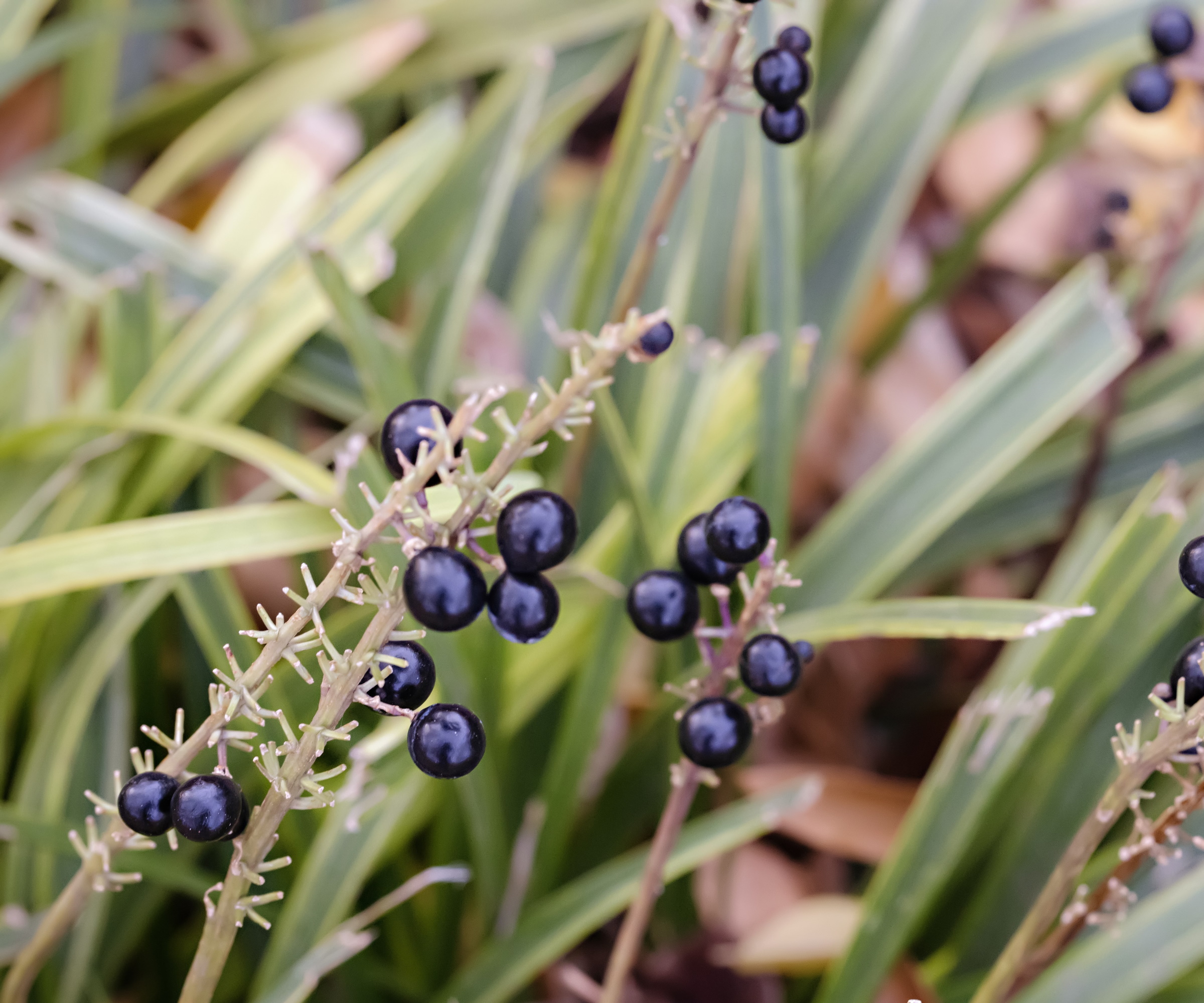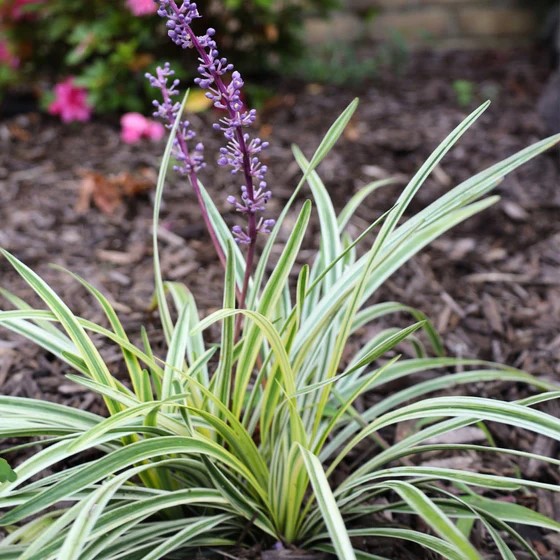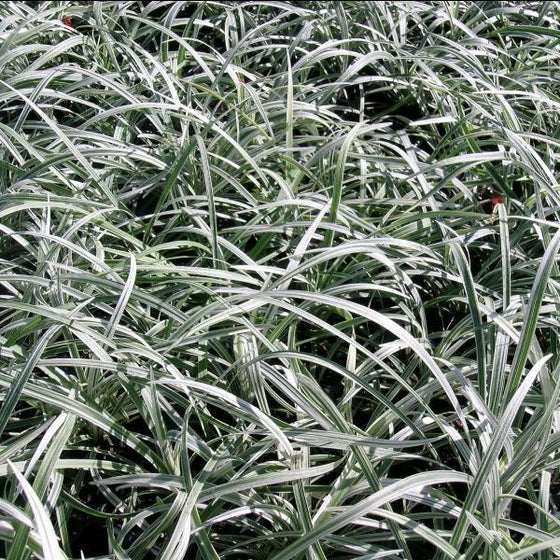How to grow monkey grass – the perfect part-shade perennial
This low-maintenance herbaceous perennial is an attractive and tough groundcover option for partially shady areas


Liriope, commonly known as monkey grass, is a versatile and resilient herbaceous plant with attractive foliage and striking purple-mauve flower spikes. When thinking about planting ideas for your backyard, this easy-to-grow plant must surely be a consideration, particularly if you are looking for year-round interest.
This evergreen perennial is native to Asia, notably China and Japan, and exhibits a surprising amount of versatility regarding planting conditions and growing preferences.
Monkey grass tends to form dense clumps of evergreen, grass-like foliage that can be useful for ground cover. Monkey grass is also suitable for use in partially shady places, such as planting under trees or established shrubs. Whilst this is a versatile plant, they tend to perform better in moist, but free-draining soil, with a combination of sun and shade.
Monkey grass is known for displaying arching, grass-like leaves and spikes of small, most often mauve, flowers that bloom in late summer to early fall. These flowers are then followed by attractive and striking berries. Truly a plant that provides year-round interest in any backyard.

How to grow monkey grass
Monkey grass stands out as a versatile and resilient ornamental evergreen. By following a few simple rules, you too can successfully grow liriope in your yard.
Things to consider about monkey grass

Monkey grass, or liriope, is a great low-maintenance planting option with evergreen, grass-like foliage that is understated but very effective at filling gaps in your garden borders. Whether you have a large or small backyard, monkey grass could be the plant you need to try this year, suitable for lining the garden path, growing under large trees, or simply as an evergreen to add interest to your flower beds.
'Liriope is a hardy choice for garden borders or use as a ground cover,' says Mike Murphy, garden expert and owner at You Had Me At Gardening. 'It is also relatively resistant to pests and diseases,' Mike continues, meaning that after you plant your monkey grass, you can let it grow without needing much attention. 'Once established,' Mike says, 'liriope is relatively low-maintenance.'
Design expertise in your inbox – from inspiring decorating ideas and beautiful celebrity homes to practical gardening advice and shopping round-ups.
It is both a resilient and tough evergreen perennial, growing happily in a variety of conditions. In general, you can grow monkey grass anywhere in US hardiness zones 4 - 10, conversely tolerating both cold and hot extremes. It is also drought tolerant, if only for short periods. Finding a moist, partially shaded spot will result in the best growth.
There are different species and varieties of liriope available to purchase online or from your local garden store. The standard dark green variety is readily available and reasonably priced, such as this Liriope muscari 'Big Blue' from Garden Goods Direct. Some varieties, such as this Liriope muscari 'Variegata' from Garden Goods Direct, have attractive variegated foliage as well striking mauve flower spikes.
If you are looking for something unusual, this Liriope spicata 'Gin-ryu' from Garden Goods Direct has dark green foliage with striking silver-white markings. When planted in groups, the variety appears almost silver.

Mike grew up gardening with his parents and grandparents. He enjoys his backyard orchard of dwarf fruit trees, raspberry and blackberry patches, and raised garden boxes. In addition to his perennials, Mike enjoys sprouting new fruit and vegetable seeds every spring.
Buy monkey grass plants online
Top tips for growing monkey grass

- Soil: 'Liriope, or monkey grass, thrives in well-drained soil,' says Mike. They prefer moist but well-draining soil, so it is best to avoid a waterlogged or damp spot. Whilst monkey grass can tolerate short periods of drought, applying a layer of mulch or barkchip in the fall can help to improve the quality of dry soils. 'Mulching around the plants helps retain moisture and suppress weeds,' Mike continues.
- Light: This plant is 'adaptable to various light conditions,' Mike says. It is 'particularly shade-tolerant, making it an excellent choice for areas with filtered sunlight or partial shade.' It is for this reason that many garden designers and gardeners use monkey grass, as it is very useful in tricky areas such as when planting under trees. Interestingly, as well as being shade-tolerant, liriope can also handle full sun, making it a versatile plant for different garden settings.
- Watering: After planting, ensure that you water your liriope plants regularly, particularly during warm periods. This is necessary during the first year after planting. Monkey grass does best with 'consistent, deep watering,' Mike says.
- Fertilizing: Considering how and when to feed monkey grass, Mike recommends using 'a balanced fertilizer in spring and summer to support healthy growth,' Mike advises. 'Avoid over-fertilizing as this can lead to excessive foliage at the expense of blooms.' Always follow the instructions on the fertilizer label, ensuring that you dilute the correct amount in water, and repeat only as often as recommended. As Mike says, too much fertilizer can result in more foliage at the expense of flower spikes.
- Pruning: 'Liriope is a grass-like plant that benefits from pruning to maintain its tidy appearance,' Mike says. This is best done in 'late winter or early spring before new growth emerges.' While 'mowing is not recommended, you can use hedge trimmers to cut back the foliage to a few inches above the ground.' Alternatively, a slower, careful, and more traditional approach is to use secateurs, trimming back the foliage and leaving small monkey grass clumps an inch or two above ground.
FAQs
Can I plant monkey grass in full shade?
Monkey grass is remarkably versatile, tolerating both sun and shade. For best results, it is recommended to plant monkey grass in a partially shaded spot, such as under a small tree or shrub, where it can enjoy some sunshine at least for a few hours a day.
This will help with flower development in the summer. Whilst monkey grass can grow in full shade, it will produce few or no flowers, which should be remembered when planting in total shade.
Monkey grass is a popular and attractive option for use as a ground cover, under shrubs, or lining paths in your backyard. Consider using other perennial or evergreen plants that grow under trees to maximize greenery in your outside space.

Thomas is a Content Editor within the Gardens Team at Homes and Gardens. He has worked as a professional gardener for both public spaces and private estates, specializing in productive gardening, growing food and flowers. Trained in Horticulture at the Garden Museum, he has written on gardening and garden history for various publications, including The English Garden, Gardens Illustrated, Hortus, The London Gardener and Bloom. He has co-authored a Lonely Planet travel book, The Tree Atlas, due out in 2024.


